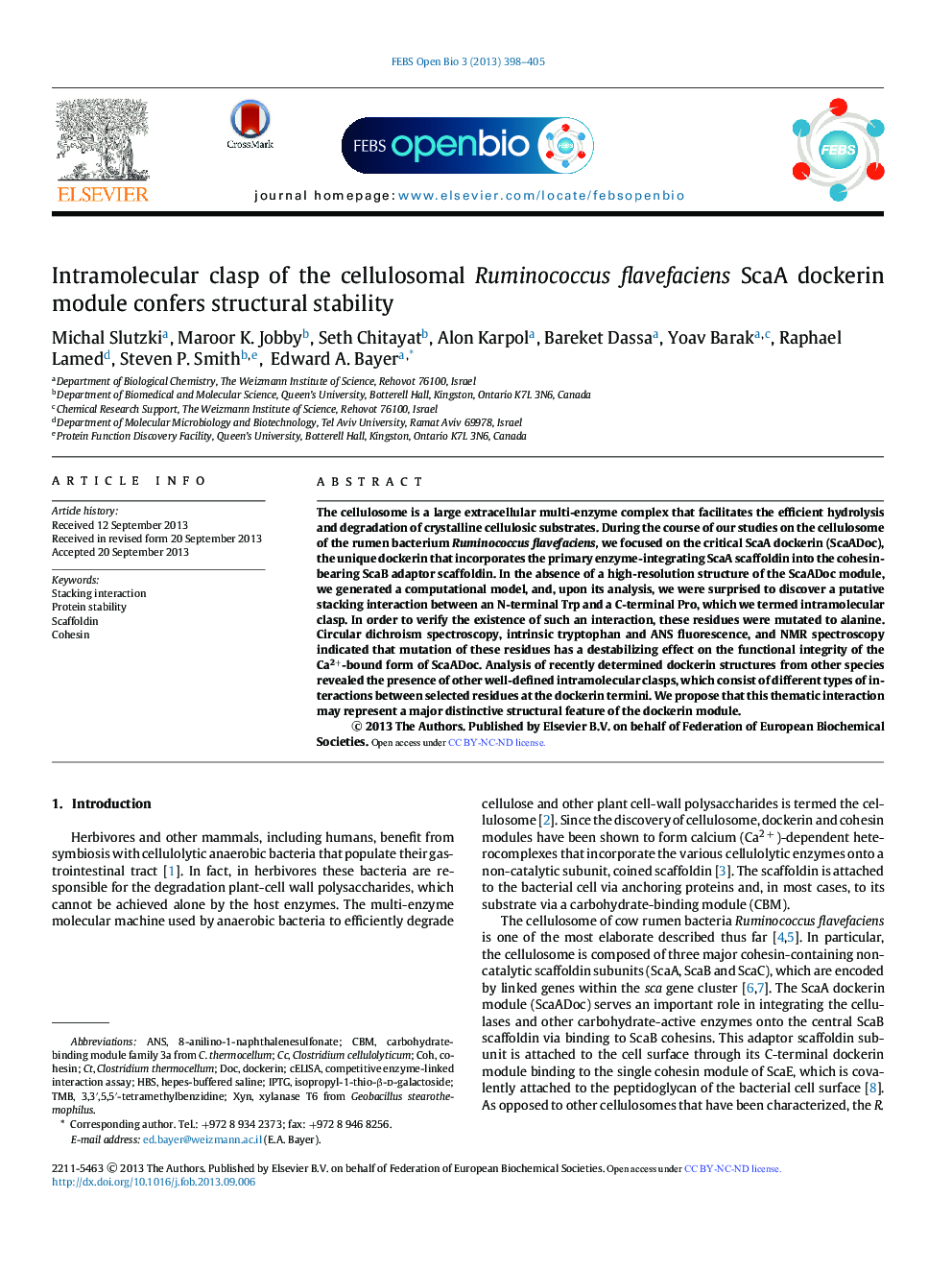| Article ID | Journal | Published Year | Pages | File Type |
|---|---|---|---|---|
| 1981814 | FEBS Open Bio | 2013 | 8 Pages |
•A structural model for the Ruminococcus flavefaciens ScaA dockerin is proposed.•A stacking interaction between N- and C-terminal residues was derived from the model.•Mutations of putative interacting residues resulted in reduced stability and binding.•Similar intramodular “clasp” interactions were observed in other dockerin structures.
The cellulosome is a large extracellular multi-enzyme complex that facilitates the efficient hydrolysis and degradation of crystalline cellulosic substrates. During the course of our studies on the cellulosome of the rumen bacterium Ruminococcus flavefaciens, we focused on the critical ScaA dockerin (ScaADoc), the unique dockerin that incorporates the primary enzyme-integrating ScaA scaffoldin into the cohesin-bearing ScaB adaptor scaffoldin. In the absence of a high-resolution structure of the ScaADoc module, we generated a computational model, and, upon its analysis, we were surprised to discover a putative stacking interaction between an N-terminal Trp and a C-terminal Pro, which we termed intramolecular clasp. In order to verify the existence of such an interaction, these residues were mutated to alanine. Circular dichroism spectroscopy, intrinsic tryptophan and ANS fluorescence, and NMR spectroscopy indicated that mutation of these residues has a destabilizing effect on the functional integrity of the Ca2+-bound form of ScaADoc. Analysis of recently determined dockerin structures from other species revealed the presence of other well-defined intramolecular clasps, which consist of different types of interactions between selected residues at the dockerin termini. We propose that this thematic interaction may represent a major distinctive structural feature of the dockerin module.
Graphical abstractFigure optionsDownload full-size imageDownload as PowerPoint slide
